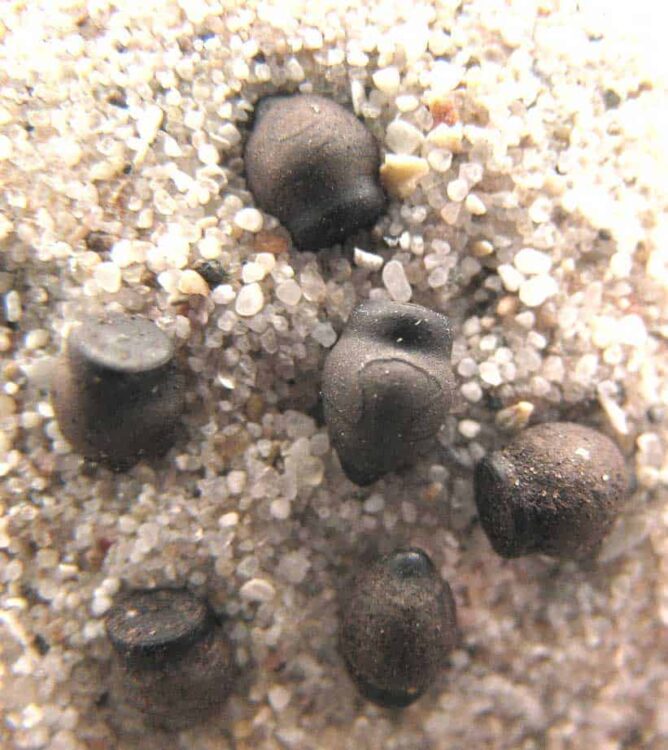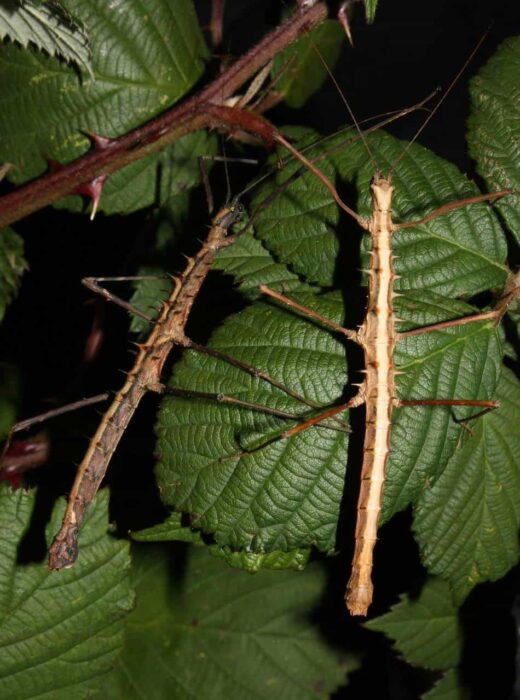Table of Contents
One of the most commonly asked questions about stick insects is this: are stick insects asexual? Unfortunately, the question is not as easily answered as some of the others that are commonly heard.
Some species of stick insect are asexual, others are not, and still others are both. How can a stick insect be both sexual and asexual? It is possible because of something known as facultative parthenogenesis .
.
Keep reading to learn all about this curious biological characteristic. In the meantime, any stick insects you might keep as pets could turn out to reproduce asexually.
could turn out to reproduce asexually.
For more advice and information on keeping and looking after stick insects, check out my ebook on Amazon click here
(opens in a new tab).

Different Means of Reproduction
Before we answer the question “are stick insects asexual?”, let us first talk about the differences between sexual and asexual reproduction. Sexual reproduction is the most common form among living creatures. It involves both the male and female.
Sexual reproduction requires the combination of egg and sperm. Introduce egg and sperm and you end up with a fertilized egg that eventually becomes a living creature. On the other hand, asexual reproduction only requires the egg. No fertilization is required. Although fewer species reproduce asexually, those that do obviously have no trouble thriving.
What makes many stick insect species unique is that they can reproduce both ways. Why nature set things up this way is unclear. At any rate, female stick insects tend to outnumber their male counterparts due to what asexual reproduction creates.
Reproducing through Parthenogenesis
Parthenogenesis is the process by which stick insects can reproduce with just the female egg. It is considered one form of asexual reproduction. How does it work? It is fairly simple.
Female stick insects can lay their eggs either fertilized or unfertilized. Those that are unfertilized always mature into female stick insects. More importantly, the young females are exact genetic replicas of their mothers. If a stick insect ‘couple’ wanted either a male or a genetically different female, they would have to engage in sexual reproduction.
either fertilized or unfertilized. Those that are unfertilized always mature into female stick insects. More importantly, the young females are exact genetic replicas of their mothers. If a stick insect ‘couple’ wanted either a male or a genetically different female, they would have to engage in sexual reproduction.
That brings us to the concept of facultative parthenogenesis. The term ‘facultative’ simply designates that the female can decide for herself whether or not she wants her eggs fertilized. If she doesn’t, she fights off male suitors vigorously. Indeed, keeping male suitors at bay constitutes one of the few times stick insects might resort to violence.
On the other hand, female stick insects sometimes welcome the advances of male suitors. There are certain advantages to doing so, including genetic diversity.
It is also interesting to note that unfertilized eggs do not hatch as quickly as their fertilized counterparts. Thus, stick insect species that rely primarily on asexual reproduction do not proliferate as easily. It could be that those species with the facultative parthenogenesis characteristic rely on sexual reproduction to keep their numbers high.
as their fertilized counterparts. Thus, stick insect species that rely primarily on asexual reproduction do not proliferate as easily. It could be that those species with the facultative parthenogenesis characteristic rely on sexual reproduction to keep their numbers high.

Differences Among Species
What you have read thus far about sexual and asexual reproduction in stick insects is general. There are so many species of stick insects (around 3,000 by current estimates) that there are bound to be differences in the details between them.
For example, there are some species that appear to be completely parthenogenetic. In other words, they only reproduce asexually. This is assumed because no males of said species have ever been found. Not finding males in the wild certainly does not guarantee they do not exist, but the chances of such species being fully parthenogenetic is quite high.
There are other species that produce both sexually and asexually in the wild but, when taken into captivity, revert to asexual reproduction only. Science has yet to explain this phenomenon. Nonetheless, it has been observed in labs all over the world.
Still other species reproduce in both ways with no rhyme nor reason. One group of eggs might be left unfertilized while the next is fertilized. A female might reproduce asexually 90% of the time and sexually just 10% of the time. Sometimes there is no way to know what will happen until it actually happens.
Are Stick Insects Asexual – Your Own Experiences
If you own stick insects as pets , what have you observed? Are stick insects asexual in your experience? It would be fascinating to poll all of the stick insect owners around the world to find out what their pets do. It is probably a safe bet that not all of them observe their stick insects reproducing.
, what have you observed? Are stick insects asexual in your experience? It would be fascinating to poll all of the stick insect owners around the world to find out what their pets do. It is probably a safe bet that not all of them observe their stick insects reproducing.
In order for stick insects to reproduce effectively in captivity, they have to be well fed and well cared for. Conditions in their enclosures have to be just right as well. So while most species are more than prolific enough in the wild, getting them to reproduce in captivity is not necessarily the easiest thing in the world.
If you have a particular species of stick insect you keep regularly, do not assume a lack of reproduction is the result of not having any males around. It could just be a matter of the conditions in your enclosure not being conducive to asexual reproduction.
Are stick insects asexual? Yes and no. Now that you know the answer, you can do a little more research into those species you are interested in.

